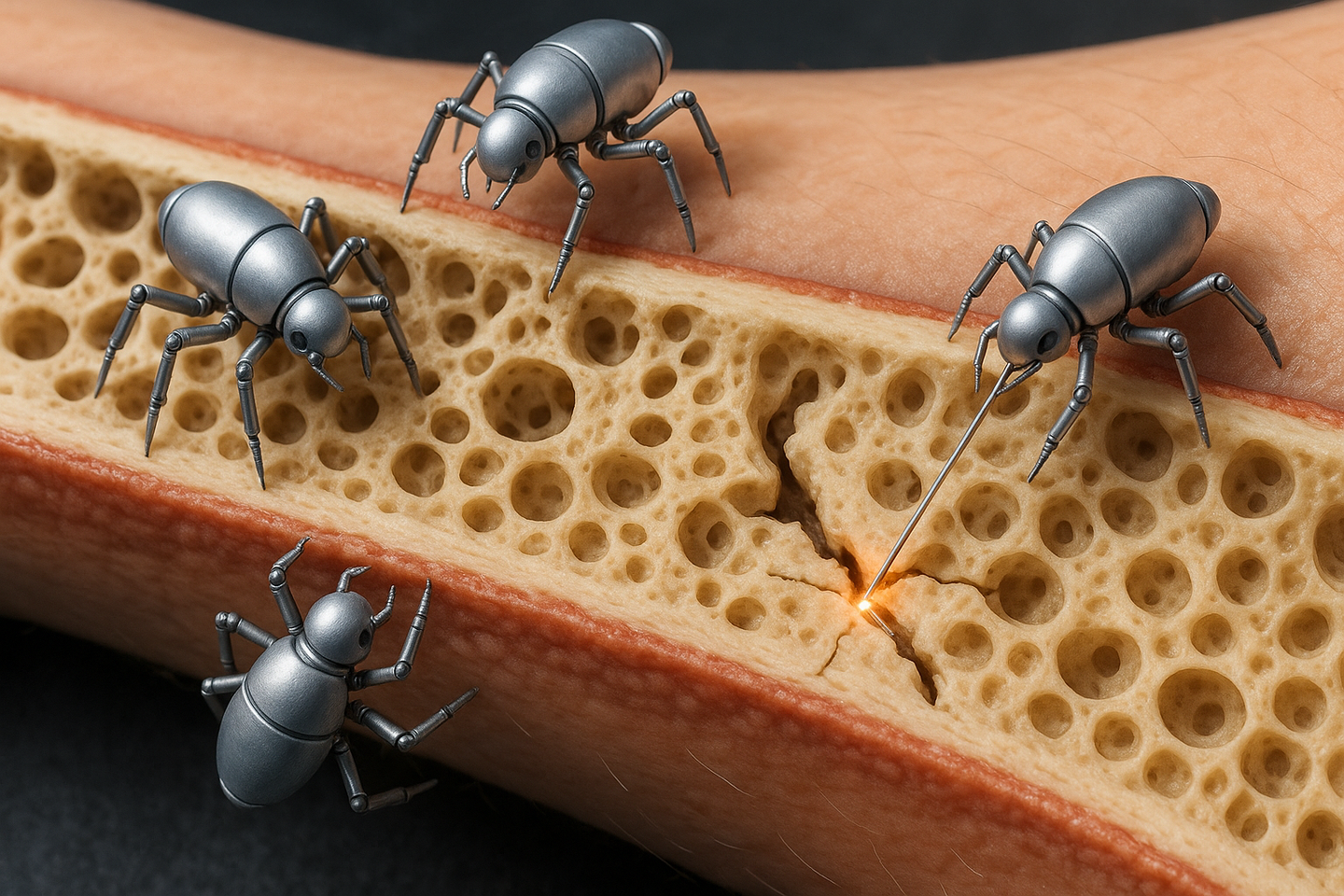New discovery could protect diabetics from hypoglycemia
New research shows how delta cells protect against low blood sugar, offering hope for safer diabetes treatments.

Unsung delta cells—long thought to play only a supporting role—are actually key players in protecting you from dangerous drops in blood sugar. (CREDIT: Shutterstock)
For years, scientists have focused their attention on the pancreas' insulin-producing beta cells and left small clusters of cells in the same region in the background.
But a new paper uncovers that the less prominent delta cells—hitherto believed to be mere standbys—have a major function in protecting you from dangerous plunges in blood sugar. Their regulation of how insulin flows out of the pancreas could be responsible for the instability of blood sugar in diabetes.
The Pancreas as a Network of Hormones
The pancreas has more functions than secreting insulin. Inside clusters called islets of Langerhans, a mix of hormone-secreting cells work together to control blood sugar. Beta cells release insulin to decrease sugar. Alpha cells release glucagon to increase it. And delta cells release somatostatin, a hormone that's a brake on both of them. Though delta cells are only five percent of the islet, this tiny minority can command the rhythm of insulin release.
If insulin flows out too strongly, the blood sugar content falls, sometimes even to dangerous levels. Somatostatin prevents that by telling beta cells to relax. The puzzle has been how delta cells receive the signal that it is time to act. And the answer, as it turned out, is not merely chemical messengers but tiny electrical connections that directly link the cells.
A Dual Signaling System
Researchers at the University of California, Davis, led by Professor Mark Huising and M.D./Ph.D. student Mohammad Pourhosseinzadeh set out to demystify the process. Earlier work by the Huising lab found that beta cells release a hormone called urocortin-3 as well as insulin. That signal tells delta cells to release somatostatin and slow down insulin release. But the timing suggested there was more going on—delta cells sometimes reacted before urocortin-3 arrived.
To see the process at work, the bioengineered mouse islet cells with a fluorescent marker that lit up when calcium levels rose. Because calcium fluxes track hormone secretion closely, the glow gave scientists a way to see cells firing in real time. They found that under conditions of high glucose, beta and delta cells fired together, like heart cells beating in sync. Calcium signals seemed to travel from beta to delta cells almost instantaneously.
The key was connexin 36, a protein that builds gap junctions—tiny bridges between neighboring cells. When researchers blocked those bridges, delta cells failed to sync with beta cells. Even with urocortin-3 on the scene, the timing didn't work. The results indicated a one-two punch: electrical signals through gap junctions condition the delta cells to fire back, and urocortin-3 boosts the message and triggers release of somatostatin.
"You have a 1-2 punch," Pourhosseinzadeh said. "The fast signal through gap junctions primes the delta cells, prepares them to respond. Then about 30 seconds later, the urocortin-3 signal cranks up that response."
Hidden Diversity Among Delta Cells
One of the surprises was the heterogeneity of delta cells in their behavior. Some follow beta cell activity tightly, but others respond early, late, or not at all. This functional heterogeneity may actually be an advantage. If delta cells all responded similarly, the system could overcorrect or undercorrect too easily. Rather, the diverse timing provides flexibility, enabling the pancreas to calibrate insulin release and preclude runaway oscillations.
That diversity also raises the question of whether specific roles are filled by different subpopulations of delta cells. There could be there may be quick responders among them, and others with slower or different conditions. Mapping those subpopulations could reveal novel targets for therapy.
Diabetes and a Fragile Balance
For people with diabetes, this delicate give-and-take can deteriorate. Not only do their beta cells fail to release enough insulin, but their backup systems that keep blood sugar from dropping too low are also faulty. Insulin therapy and some medications can drive sugar down rapidly, and with no break signals operating, low blood sugar can strike abruptly. In severe cases, low blood sugar can cause unconsciousness, coma, or death if it is not corrected immediately.
"Your body tissues literally starve when that happens, especially the brain," Pourhosseinzadeh said. "If you do not get immediate medical treatment, you can eventually fall into a coma and die." Severe hypoglycemia can also increase the risk of heart disease and other disease.
In earlier studies on mice, removal of delta cells decreased blood glucose by approximately 20 percent below normal after a glucose challenge, indicating their role in keeping levels within a tight range. In diabetes patients, reduced levels of urocortin-3 also impair the signal to delta cells, allowing it to be more challenging for them to regulate insulin release. Along with disrupted gap junctions, this loss of coordination might explain blood sugar's rollercoaster-like fluctuations.
The Road Ahead
The UC Davis study indicates that bringing back or enhancing delta cell function could be the ticket. Boosting activity of urocortin-3 or improving gap junction coupling could make the delta cells more effective at regulating insulin. The concept would not be to suppress insulin, but to enable the pancreas to apply the brakes more smoothly as blood glucose starts to drop.
“We are actually studying how this 1-2 punch can be utilized to make the existing drugs work better,” Huising said. Therapies that fine-tune delta cell activity could complement current diabetes treatments, reducing the risk of dangerous lows without interfering with the benefits of insulin therapy.
Nevertheless, there are challenges to come. Since delta cells also retain glucagon—the hormone that raises blood sugar—tweaking their activity needs to be carefully controlled lest the pendulum swing too far the other way. And while a lot of this has been done using mouse models, researchers are eager to understand how it applies to the human pancreas, where cell types and ratios are unknown.
Practical Implications of the Research
The study illuminated the underestimated role that delta cells play in regulating blood sugar levels and outlines new possibilities for managing diabetes. By finding a way to substitute the natural "braking system" that delta cells provide, doctors may one day reduce the risk of hypoglycemia for millions of people.
Drugs that increase urocortin-3 signaling or protect gap junctions may be more effective and safer at regulating blood sugar.
Beyond diabetes, the study also sheds more basic understanding about how organs regulate both chemical and electrical signals—a notion that could be applied to other tissues too.
Research findings are available online in the journal PNAS.
Related Stories
- You can prevent type 2 diabetes without losing weight, study finds
- Weight-loss surgery outperforms GLP-1 drugs for diabetes and obesity, study finds
- Wearable microneedle patch offers real-time diabetes tracking
Like these kind of feel good stories? Get The Brighter Side of News' newsletter.
Rebecca Shavit
Science & Technology Journalist | Innovation Storyteller
Based in Los Angeles, Rebecca Shavit is a dedicated science and technology journalist who writes for The Brighter Side of News, an online publication committed to highlighting positive and transformative stories from around the world. With a passion for uncovering groundbreaking discoveries and innovations, she brings to light the scientific advancements shaping a better future. Her reporting spans a wide range of topics, from cutting-edge medical breakthroughs and artificial intelligence to green technology and space exploration. With a keen ability to translate complex concepts into engaging and accessible stories, she makes science and innovation relatable to a broad audience.



